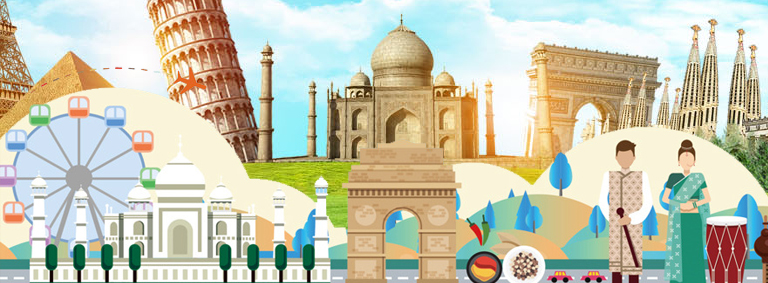India has emerged as tourism powerhouse over the recent years and is the eighth largest country in terms of contribution to travel and tourism GDP. In 2018, the sector generated USD 247.3 billion (INR 16.91 trillion) and was the source of livelihood generation for 42.7 million people. Foreign Tourist Arrivals crossed the 10 million milestone in 2017 and the growth trend is likely to continue over the coming years.
However, consumption by domestic tourists remains the key strength of the sector in India, much stronger than the global average. The segment is likely to grow further with growing disposable income, increasing inclination towards traveling across age groups and emergence of new destinations as well as new themes of tourism. India also follows the global trend in terms of higher spending on leisure tourism as compared to business spending.
In 2018, the tourism sector grew 6.7 per cent in India while the global average was 3.9 per cent and the global economy grew at 3.2 per cent. The sector accounted for 9.2 per cent of the total domestic economy. By 2029, the Indian tourism sector is likely to grow at 6.7 per cent each year to reach INR 35 trillion and thus account for 9.6 per cent of the country’s GDP.
By 2029, the sector is expected to provide employment to nearly 53 million people, directly and indirectly. The systematic growth, maintenance and sustainable development of tourism destinations as well as focus on promoting the emerging avenues of tourism will be essential towards unlocking its true potential.
The growth in Indian travel and tourism sector has largely been driven by domestic tourists. Foreign tourists still account for a limited share as compared to some of the top-ranking countries. The government intends to achieve the ambitious target of 1% foreign tourist arrivals in world’s international tourist arrivals by 2020 and increase it to 2% by 2025.
Traditional and emerging themes of tourism, including nature, heritage and cultural, religious, adventure, medical and wellness, MICE and wedding, among others have been a key attraction for domestic and foreign tourists. Strong domestic demand and economic growth, price competitive offerings, infrastructure development, and emergence of new destinations and niche tourism products will continue to drive the growth of the industry in future.
The government has also undertaken several initiatives such as rapid implementation of Swadesh Darshan and PRASHAD schemes, e-visa for citizens from 166 countries, adventure tourism guidelines, among others. Furthermore, promotional activities such as Incredible India 2.0 campaign and India Tourism Mart 2018 have also immensely benefited the sector.
Going forward, there is a greater need for the government and private sector to collaborate towards thematic development of the destinations and skilling of local communities. There is also a need for intervention in conservation and promotion of our natural resources, heritage and traditional arts and culture. Technology can be a key enabler and play a critical role in unprecedented growth of the sector.
14 points to make India a tourism superpower:
1. Tourism Competitiveness Index (TCI)/ Ease of Doing Business (EoDB) rankings for states/ UTs
2. Creation of National Tourism Authority & Advisory Council
3. Incentivize private sector participation
4. Rationalizing GST for hotels
5. Land bank repository
6. Greater coordination at state Level
7. Upgrading government-owned infrastructure through private sector participation
8. Industry-oriented skill development
9. Supporting small enterprises
10. Leveraging social media to boost inbound tourism
11. Technology penetration in tourism sector
12. Combined VISA option
13. Focus on source markets
14. Focus on Northeast India
(The writer is Past President of FICCI and Chairperson & Managing Director of The Lalit Suri Hospitality Group)





